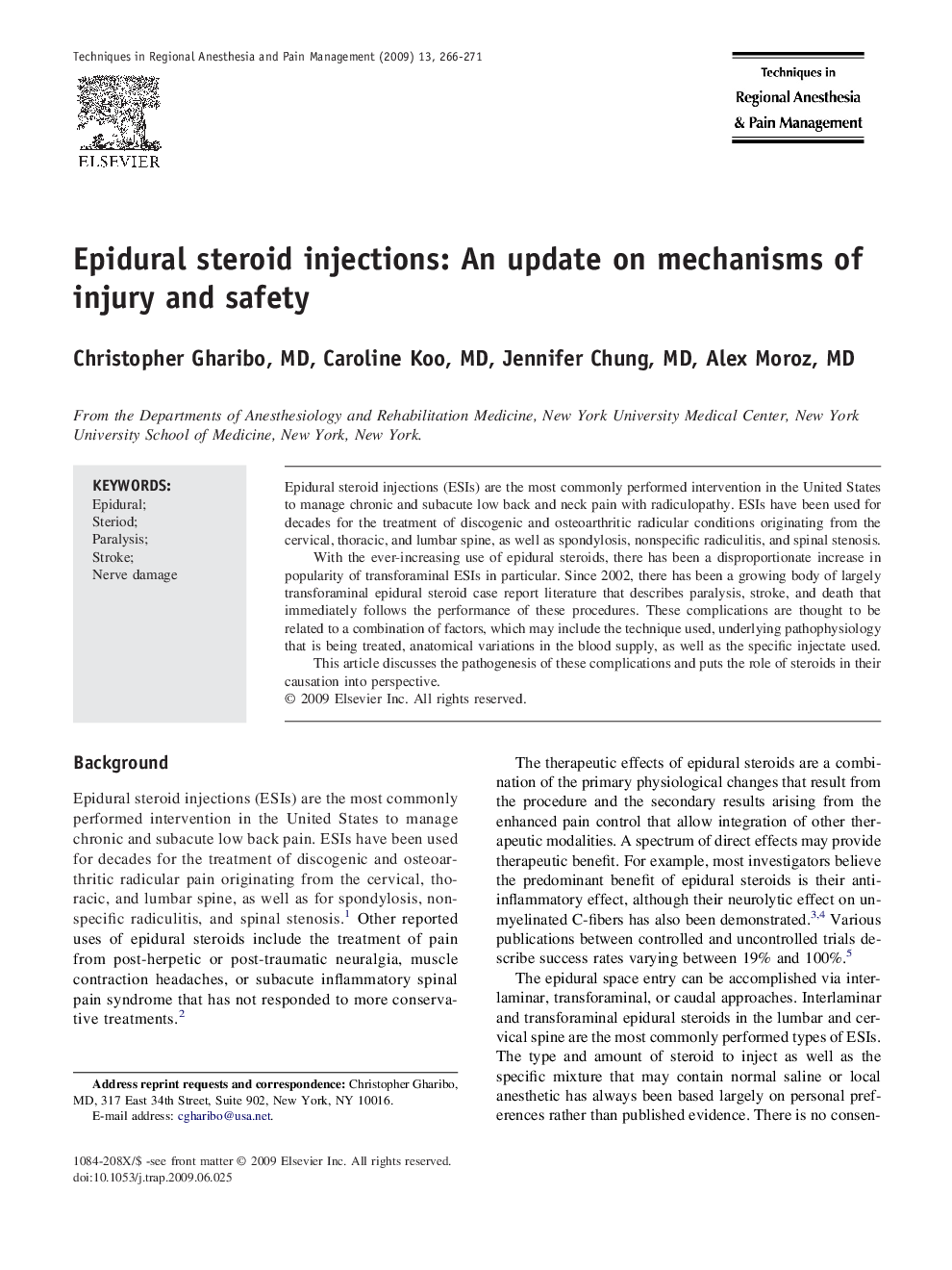| Article ID | Journal | Published Year | Pages | File Type |
|---|---|---|---|---|
| 2772467 | Techniques in Regional Anesthesia and Pain Management | 2009 | 6 Pages |
Epidural steroid injections (ESIs) are the most commonly performed intervention in the United States to manage chronic and subacute low back and neck pain with radiculopathy. ESIs have been used for decades for the treatment of discogenic and osteoarthritic radicular conditions originating from the cervical, thoracic, and lumbar spine, as well as spondylosis, nonspecific radiculitis, and spinal stenosis.With the ever-increasing use of epidural steroids, there has been a disproportionate increase in popularity of transforaminal ESIs in particular. Since 2002, there has been a growing body of largely transforaminal epidural steroid case report literature that describes paralysis, stroke, and death that immediately follows the performance of these procedures. These complications are thought to be related to a combination of factors, which may include the technique used, underlying pathophysiology that is being treated, anatomical variations in the blood supply, as well as the specific injectate used.This article discusses the pathogenesis of these complications and puts the role of steroids in their causation into perspective.
